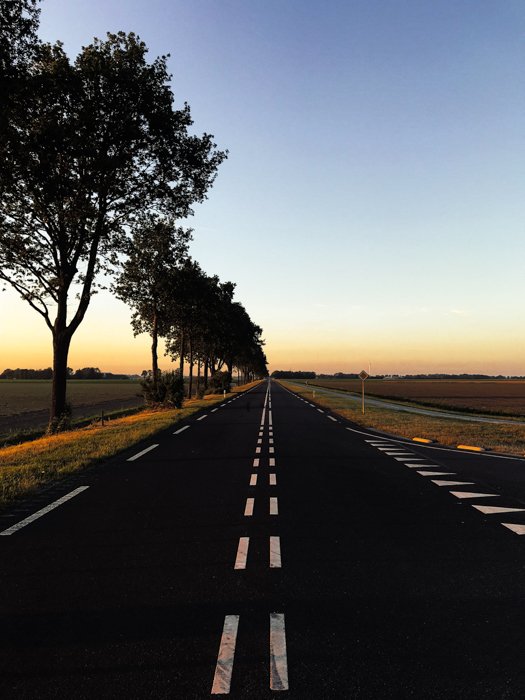In the realm of photography, there are numerous techniques and compositional tools that photographers deploy to create compelling images. One such powerful tool is the concept of 'leading lines'. Effective utilization of leading lines can significantly elevate the visual appeal of your photographs, guiding the viewer's gaze through your image and drawing attention to key points of interest.
This comprehensive guide aims to shed light on the concept of leading lines, its importance, types, and practical tips for using them effectively to create captivating compositions.
Table of Contents
- Understanding Leading Lines
- Why Use Leading Lines?
- Different Types of Leading Lines
- Leading Lines vs Paths
- Strategic Usage of Leading Lines
- Tips and Tricks for Working with Leading Lines
- Leading Lines in Various Photography Genres
- Studying the Masters: Learning from Others
- Common Pitfalls to Avoid
- Conclusion
Understanding Leading Lines
Leading lines are essentially lines within an image that guide the viewer's eyes from one part of the frame to another, creating a visual narrative. These lines often start from the bottom of the frame and guide the eye upward, from the foreground to the background. When utilized effectively, they draw the viewer's attention to the main subject or focal point of the photo.

Leading lines can manifest in various forms. They can be explicit lines such as roads, rivers, or the edges of buildings, or they can be more subtle, like a series of objects in a row, patterns in the sand, or even the direction of light and shadows.
Why Use Leading Lines?
Leading lines serve several crucial roles in photographic composition. They guide the viewer's eye through the image, create a sense of depth and three-dimensionality, and add dynamism to the composition. By carefully positioning leading lines in the frame, you can draw attention to areas of a photo that matter, like a stunning sunset or an architectural marvel. You can use leading lines to influence where the viewer looks and to keep them engaged with the image.

Apart from guiding the viewer's gaze, leading lines also contribute to the overall aesthetic appeal of your image. They add structure and balance to your composition, creating a more harmonious and pleasing image.
Different Types of Leading Lines
Leading lines are versatile and can take various forms and directions, each contributing differently to your composition. Some common types include:
-
Vertical Leading Lines: These are lines that stretch from the bottom of the frame towards the top. They add depth to your image and give the viewer a sense of journeying through the scene.
-
Horizontal Leading Lines: These are lines that move from one side of the frame to the other. They can increase the intensity of your image and often denote stability and calm.
-
Diagonal Leading Lines: These lines introduce a sense of dynamic movement and action in your composition. They are often used to create tension and excitement.
-
Curved Leading Lines: While straight lines are more common, curved lines can add an extra layer of complexity and interest to your image. They provide a sense of flow and grace that straight lines might not achieve.
Leading Lines vs Paths
While both leading lines and paths serve to guide the viewer's eye, they have a slight difference in functionality. Leading lines direct the viewer's attention to a specific point of interest in the image. Paths, on the other hand, tend to guide the viewer's gaze towards a vanishing point, creating a sense of depth and dimension.

Strategic Usage of Leading Lines
The effective use of leading lines requires a thoughtful approach. Here are some steps to guide you:
-
Find Leading Lines: The first step is to identify potential leading lines in your scene. Look for lines or patterns that could serve to guide the viewer's eye.
-
Identify Your Focal Point: Determine the primary subject or point of interest in your image. This is where you want your leading lines to direct the viewer's attention.
-
Compose Your Shot: Position your leading lines so they guide the viewer's gaze towards your focal point. You might need to move around or adjust your shooting angle to get the best composition.
-
Evaluate Your Composition: Once you've positioned your leading lines, review your composition. Consider if there are ways to enhance the effect of the leading lines, such as changing your camera position or using a different focal length.
Tips and Tricks for Working with Leading Lines
Here are some tips to get the most out of leading lines in your photography:
-
Use a Wide-Angle Lens: Using a wide-angle lens allows you to capture more of the scene and emphasize the leading lines, creating a more visually engaging composition.
-
Incorporate Multiple Leading Lines: If possible, incorporate more than one leading line in your composition. Multiple lines leading towards your main subject can make your composition even stronger.
-
Use the Near-Far Technique: This technique involves placing a strong leading line in the foreground that leads to an interesting subject in the background, creating a sense of depth.
-
Embrace the S-Curve: The s-curve is a unique type of leading line that adds a sense of depth and dynamism to your image. Look for these curves in nature or urban settings.
-
Study Other Photographers' Work: Learn from the masters. Look at the work of other photographers to understand how they use leading lines in their compositions.
Leading Lines in Various Photography Genres
The use of leading lines is not confined to any particular genre of photography. It's a universal compositional tool that can be utilized across various photography genres. Here are a few examples:
-
Landscape Photography: Leading lines can help create depth and dimension in landscape images, leading the viewer's gaze from the foreground to the background. Rivers, roads, or rows of trees can make excellent leading lines.
-
Architecture Photography: In architecture photography, leading lines can emphasize the structure's form and design. The edges of buildings, windows, and doors can serve as leading lines.
-
Street Photography: Streets, pathways, or lines created by shadows can create interesting leading lines in street photography.
-
Portrait Photography: In portrait photography, leading lines can be used to draw attention to the subject. For instance, a fence or a row of trees leading towards the subject can make the portrait more engaging.
Studying the Masters: Learning from Others
One of the best ways to understand and master the use of leading lines is to study the work of renowned photographers. Look at their compositions and identify how they have used leading lines to enhance their images. This will not only provide you with a wealth of inspiration but also help you develop your eye for spotting and using leading lines effectively.
Common Pitfalls to Avoid
While leading lines can enhance your compositions, it's important to avoid some common pitfalls:
-
Leading Lines Pointing the Wrong Way: Make sure your leading lines are guiding the viewer's gaze towards your subject or point of interest, not away from it.
-
Overuse of Leading Lines: While leading lines are a powerful tool, overuse can lead to cluttered and confusing compositions. Use them judiciously.
-
Ignoring Other Compositional Elements: Remember, leading lines are just one of the many compositional tools at your disposal. Don't neglect other elements such as framing, balance, and rule of thirds.
Conclusion
Mastering the use of leading lines can significantly enhance your photography skills, helping you create more engaging, dynamic, and visually pleasing images. Start by observing your environment, identifying potential leading lines, and experimenting with different compositions. With practice, using leading lines will become second nature, and you'll see a marked improvement in your photographic compositions.

Be it the winding path in a forest, the edge of a building, or a row of trees, leading lines are everywhere around us. So, pick up your camera, step out, and start exploring the world through the 'leading lines' lens!
FAQ
Q1: What are leading lines in photography, and why are they important?
A1: Leading lines are visual elements, often lines or patterns, that guide viewers' eyes through a photo. They add depth, engagement, and emphasis to compositions, making them a crucial tool for photographers.
Q2: What are the different types of leading lines, and how do they affect composition?
A2: Leading lines come in various forms, such as vertical, horizontal, diagonal, and curved. Each type influences composition differently, from creating depth to adding dynamism.
Q3: How can I effectively use leading lines in my photography?
A3: Start by identifying potential leading lines in your scene, determine your focal point, and position the lines to guide viewers' gazes. Experiment with angles and techniques to refine your compositions.
Q4: In which photography genres can leading lines be applied?
A4: Leading lines are versatile and can enhance compositions in landscape, architecture, street, portrait, and various other photography genres. They bring depth and engagement to diverse subjects.
Q5: What are common mistakes to avoid when using leading lines in photography?
A5: Beware of leading lines pointing away from your subject, overusing them, or neglecting other essential compositional elements like framing and balance. Balance is key to creating captivating images.












